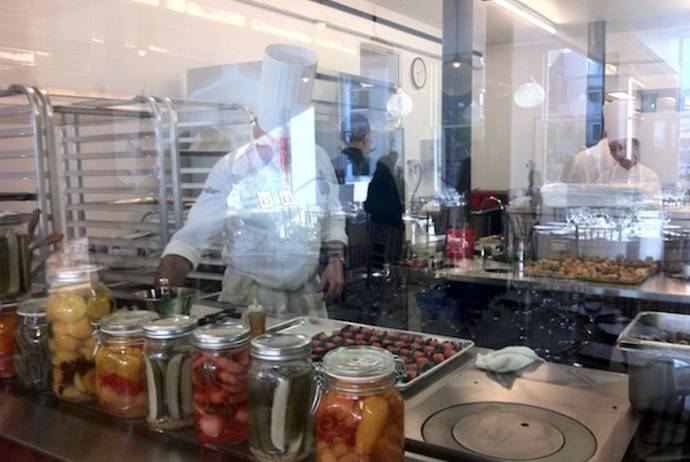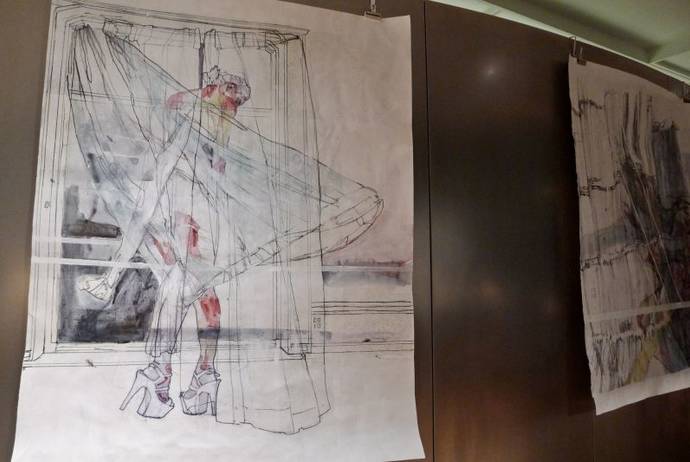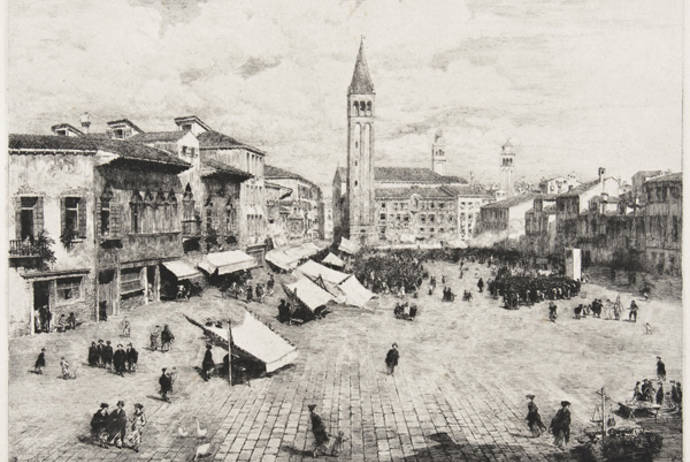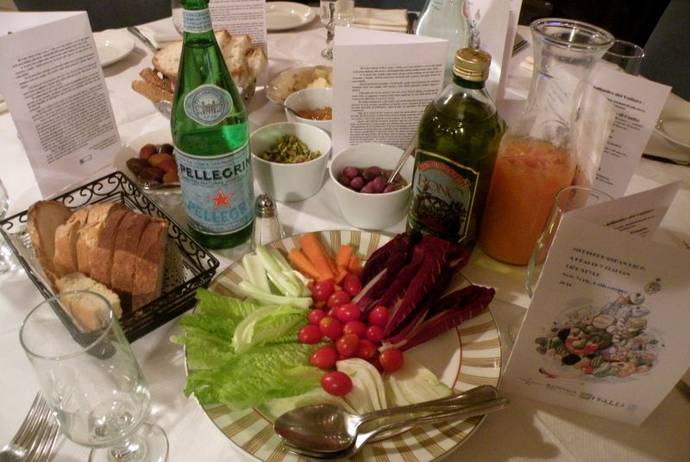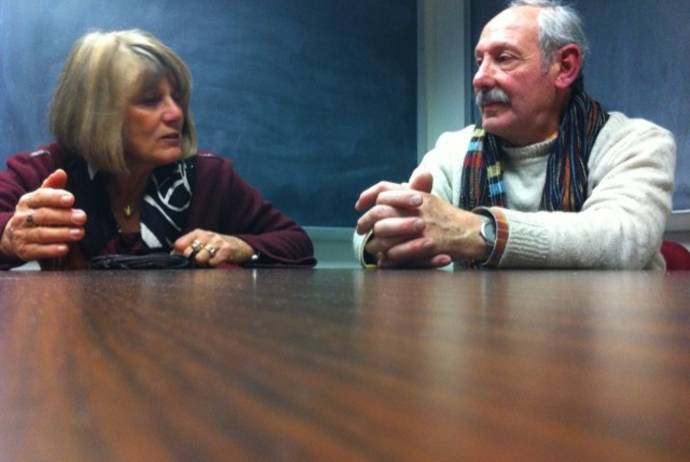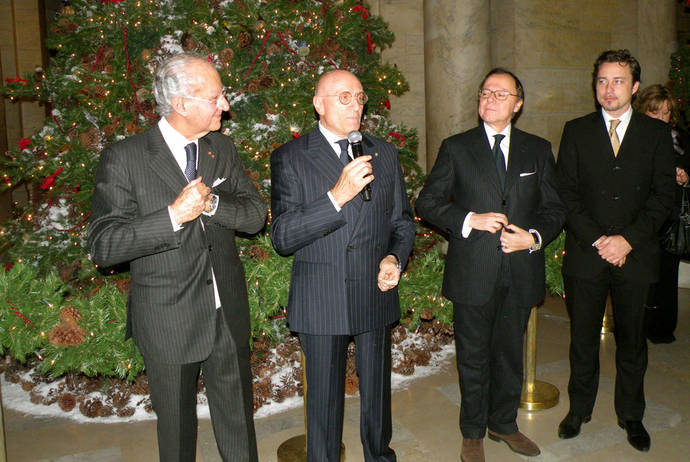Until Sunday May 15 at the Italian Cultural Institute on Park Avenue you can admire Michelangelo Merisi da Caravaggio’s La Buona Ventura (The Fortune Teller). An extraordinary opportunity for New Yorkers and art lovers to see up close one of the Italian Baroque master’s mesmerizing canvases.
After New York Caravaggio's masterpiece will travel to The Speed Art Museum in Louisville, Kentucky, where it will be on view from May 18 to June 5. The painting will further travel north to the National Art Gallery of Canada in Ottawa where it will be part of the exhibition "Caravaggio and His Followers in Rome." The show will include 60 paintings by some of the most important artists of the Baroque period along with other major artists who were inspired by Caravaggio's example.
The exhibit in New York will be on view thanks to a loan from the Musei Capitolini in Rome, Italy, to which it belongs since 1750 when Pope Benedict XIV purchased it. Two version of the painting exists, the one being shown on Park Avenue these days from 1594, and another, in Paris at the Louvre, painted the following year. Although the dates in both cases are disputed. The painting shows a foppishly-dressed boy, having his palm read by a gypsy girl. The boy looks smugly pleased as he gazes into her face; he fails to notice that she is removing his ring as she gently strokes his hand; to his ingenuous self-satisfied gaze she returns her own, quietly mocking and sly.
Caravaggio's biographer Giovanni Pietro Bellori tells that the artist picked the gypsy girl out from passers-by on the street in order to demonstrate that he had no need to copy the works of the masters from antiquity. Beginning with La Buona ventura Caravaggio's has a revolutionary impact on his contemporaries, the Renaissance theory of art as a didactic fiction with art as the representation of real life starts crumbling.
The 1594 Buona Ventura galvanized considerable interest among younger artists and the more avant garde collectors of Rome, but Caravaggio's poverty forced him to sell it for the low sum of eight scudi.
Prof. Sergio Guarino, curator of the Musei Capitolini, explained how Caravaggio influenced generations of artists and somehow "from this moment on to paint a version of La Buona Ventura becomes for many painters a sort of declaration of affiliation with the master". "We are thrilled to be presenting La Buona Ventura at the Italian Cultural Institute," he continued. And in fact the Institution on Park Avenue devoted to the promotion of Italian language and culture in the United States is the perfect setting to host the precious canvas.
Present at the official Press Conference Dr. Charles L. Venable, Director of The Speed Art Museum and the Director of the Italian Cultural Institute New York, Prof. Riccardo Viale, who stressed what an amazing opportunity this is for Baroque Art lovers. Last time the painting was in New York it was 1990, he recollected. New Yorkers should not let two more decades pass by, we want to add. Hence, grab the 6 train to the Hunter College stop, walk one block east to Park Avenue and let Caravaggio's strokes, lights and shadows mesmerize you.
This exhibition was organized by the Italian Cultural Institute of New York and The Speed Art Museum, Louisville, Kentucky. It was made possible by the Foundation for Italian Art & Culture and was generously underwritten by The Speed Art Museum.
The Exhibition- “Caravaggio's La Buona Ventura (The Fortune Teller): a masterpiece from the "Musei Capitolini", Rome”
At the Italian Cultural Institute of New York,
686 Park Avenue-New York (between 68th and 69th Street), NY 10065
From May 11 to May 15 - 2011
Gallery hours:
May 11- 12- 13 from 10:00 am to 6:00 pm
May 14- 15 from 11:00 am to 6 00 pm
Free admission
A series of guided tours through the galleries will be open to selected, professional groups.
For the Caravaggio lovers, the week is eventful. Right accross the street at Hunter College, there is scheduled a simposium on May 13 titled "Caravaggio's Gypsy Fortune Teller: Virtude and Vices in Post-Tridentine Italy."
Location: Hunter College –NYC, 695 Park Ave, NY, NY (North Building, room 1527 north)
Time: 9:00 am to 1:00 pm
Speakers:
Prof Richter, Professor of Renaissance Art History at Hunter College
Prof Catherine Puglisi, Professor of Baroque Art at Rutgers University, NJ
Prof Christopher Atkins, Professor of Baroque Art at Queens College






























